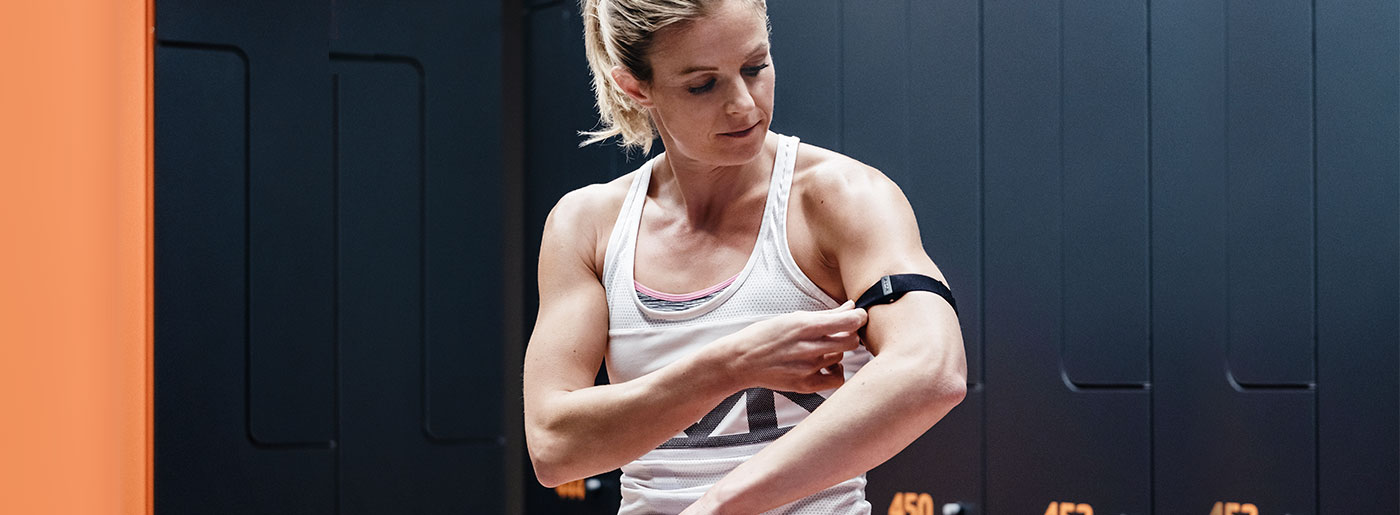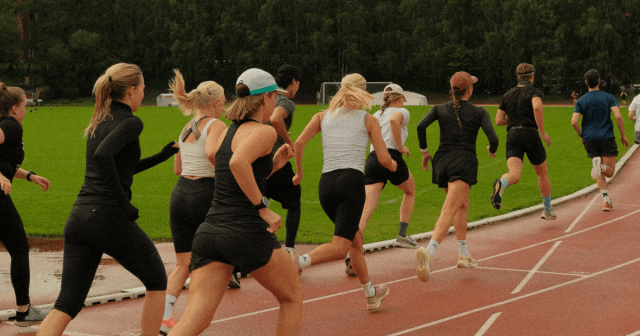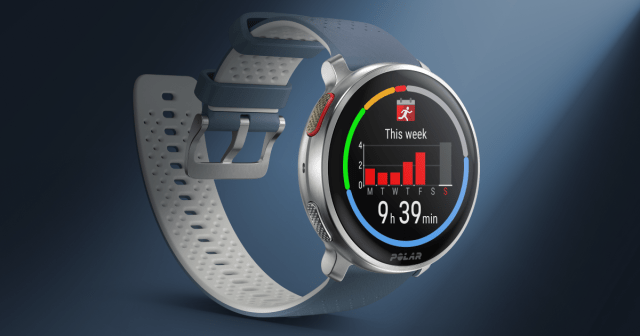Here we take a shot at explaining one of our most popular features in an easy-to-understand style, i.e. translating “geek” into English.
This article covers the Polar Fitness Test, the easy 5-minute fitness test, available in most Polar Flow compatible products, such as the Polar Unite, Polar Pacer, Polar Grit X Pro, and Polar Vantage V2 or our free Polar Beat app.
What exactly is the Polar Fitness Test?
Polar Fitness Test is a non-exercise fitness test that measures your aerobic (cardiovascular) fitness. It estimates your maximal oxygen uptake, VO2max, in milliliters per kilogram of body mass per minute.
AND THE SAME AGAIN, IN ENGLISH… What is the Polar Fitness Test?
The Polar Fitness Test is a fitness test you can do without breaking a sweat. It gives you a number that correlates to your VO2max, which is considered the golden standard of aerobic fitness measurement. Like the name suggests, the test tells you how fit or unfit you are.
Okay, but what is VO2 max?
VO2max is the maximal amount of oxygen your body can use during a whole body exercise.
Your muscles burn oxygen to generate power, and the more oxygen your muscles can burn, the more power they can generate. Your heart pumps oxygenated blood to the muscles, and the fitter your heart is, the more blood it can pump.
And here we come to the reason why VO2max tells you a lot about your cardiovascular fitness.
If you’re aerobically fit – if you have a high VO2max – you’ll be able to run long distances faster than someone with a low VO2max.
If you have a high VO2max, it means that your cardiovascular system – your heart, lungs and blood vessels – have been conditioned to deliver a lot of oxygen to the muscles AND that your muscles have been conditioned to use as much of that oxygen as possible. If you’re aerobically fit – if you have a high VO2max – you’ll be able to run long distances faster than someone with a low VO2max.
Why should I do the Fitness Test instead of a maximal or submaximal exercise test?
Well, it’s not that you should do this or that. They all have their uses.
Maximal exercise tests, like the treadmill VO2max test, are very accurate and very tough. You can also estimate your VO2max (and calculate your maximum heart rate) with various submaximal tests that you can do in a lab or in field conditions.
Like non-exercise tests, they’re not as accurate, but they have the benefit of being easy, safe and convenient for setting a baseline and tracking relative progress.
Especially if you’re just starting out, the Polar Fitness Test is one of the best ways to gauge your overall fitness level.
How do I do the Polar Fitness Test?
The Polar Fitness Test is one of the easiest fitness tests out there.
The Polar Fitness Test is one of the easiest fitness tests out there.
If you’re using a Polar watch, just lie down on the couch and relax, then start the Fitness Test, and let it run its course. The Fitness Test tracks your resting heart rate and heart rate variability and combines that information with your personal metrics, such as age, that you logged in Polar Flow. It then uses the Polar Fitness Test algorithm to estimate your VO2max.
Alternatively, you can track you can you use your Polar H10 sensor to measure your heart rate during the test.
What is the Fitness Test based on?
Remember when you got your first Polar and rushed through the setup in Polar Flow? Yeah, good times…
But when was the last time you took a look at your physical settings in Polar Flow? Age, weight, height, training background? Sex? These are all things we take into account when we calculate your Fitness Test result – in addition to your resting heart rate and heart rate variability.
It’s important that all your background information is both current and truthful.
Any tips and tricks related to the Fitness Test?
Definitely. Here are three:
1. Do the test in a similar environment at a similar time. For example, you can decide to do it the morning, right after you wake up. Feel free to use the bathroom first.
2. Relax. Don’t look at the watch, check Facebook or talk to your spouse/kids/dog during the test.
3. Don’t do any strenuous exercise or drink alcohol the night (or day) before or as this will affect your heart rate variability.
Who is the Polar Fitness Test aimed at?
You can definitely do the Polar Fitness Test whether you’re a beginner or a pro – or something in between. It’s been developed for people of all fitness levels but you’ll get the most out of the Fitness Test if you’re just starting out.
If you have a long history of endurance training and you compete at a high level, you’ll benefit most from tracking changes in your VO2max with maximal exercise tests.
Seeing changes, feeling better and getting a tangible number as a result should motivate you to keep at it.
If you’re a beginner and you follow a regular training regimen for some months, there will be several changes in your body: your resting heart rate will go down and your heart rate variability will go up. And what’s more, losing weight and increasing your general activity level, will lead to better fitness and, ultimately, a better Fitness Test result.
Seeing changes, feeling better and getting a tangible number as a result should motivate you to keep at it.
So I did the Polar Fitness Test, now what?
Great! Much more fun than a treadmill or cycle ergometer test, wasn’t it? Now you have your estimated VO2max and you can use the chart below to get an idea of what fitness class you’re in.
Fitness level classes
Men
| Age / Years | Very low | Low | Fair | Moderate | Good | Very good | Elite |
| 20-24 | < 32 | 32-37 | 38-43 | 44-50 | 51-56 | 57-62 | > 62 |
| 25-29 | < 31 | 31-35 | 36-42 | 43-48 | 49-53 | 54-59 | > 59 |
| 30-34 | < 29 | 29-34 | 35-40 | 41-45 | 46-51 | 52-56 | > 56 |
| 35-39 | < 28 | 28-32 | 33-38 | 39-43 | 44-48 | 49-54 | > 54 |
| 40-44 | < 26 | 26-31 | 32-35 | 36-41 | 42-46 | 47-51 | > 51 |
| 45-49 | < 25 | 25-29 | 30-34 | 35-39 | 40-43 | 44-48 | > 48 |
| 50-54 | < 24 | 24-27 | 28-32 | 33-36 | 37-41 | 42-46 | > 46 |
| 55-59 | < 22 | 22-26 | 27-30 | 31-34 | 35-39 | 40-43 | > 43 |
| 60-65 | < 21 | 21-24 | 25-28 | 29-32 | 33-36 | 37-40 | > 40 |
Women
| Age / Years | Very low | Low | Fair | Moderate | Good | Very good | Elite |
| 20-24 | < 27 | 27-31 | 32-36 | 37-41 | 42-46 | 47-51 | > 51 |
| 25-29 | < 26 | 26-30 | 31-35 | 36-40 | 41-44 | 45-49 | > 49 |
| 30-34 | < 25 | 25-29 | 30-33 | 34-37 | 38-42 | 43-46 | > 46 |
| 35-39 | < 24 | 24-27 | 28-31 | 32-35 | 36-40 | 41-44 | > 44 |
| 40-44 | < 22 | 22-25 | 26-29 | 30-33 | 34-37 | 38-41 | > 41 |
| 45-49 | < 21 | 21-23 | 24-27 | 28-31 | 32-35 | 36-38 | > 38 |
| 50-54 | < 19 | 19-22 | 23-25 | 26-29 | 30-32 | 33-36 | > 36 |
| 55-59 | < 18 | 18-20 | 21-23 | 24-27 | 28-30 | 31-33 | > 33 |
| 60-65 | < 16 | 16-18 | 19-21 | 22-24 | 25-27 | 28-30 | > 30 |
Shvartz, Reibold. Aerobic fitness norms for males and females aged 6 to 75 years: a review. Aviat Space Environ Med 61, 3–11, 1990.
If you liked this post, don’t forget to share so that others can find it, too.
Or give it a thumbs up!
I like this article
Please note that the information provided in the Polar Blog articles cannot replace individual advice from health professionals. Please consult your physician before starting a new fitness program.





